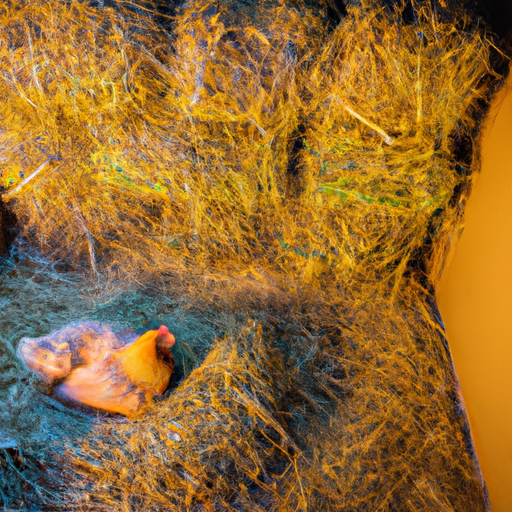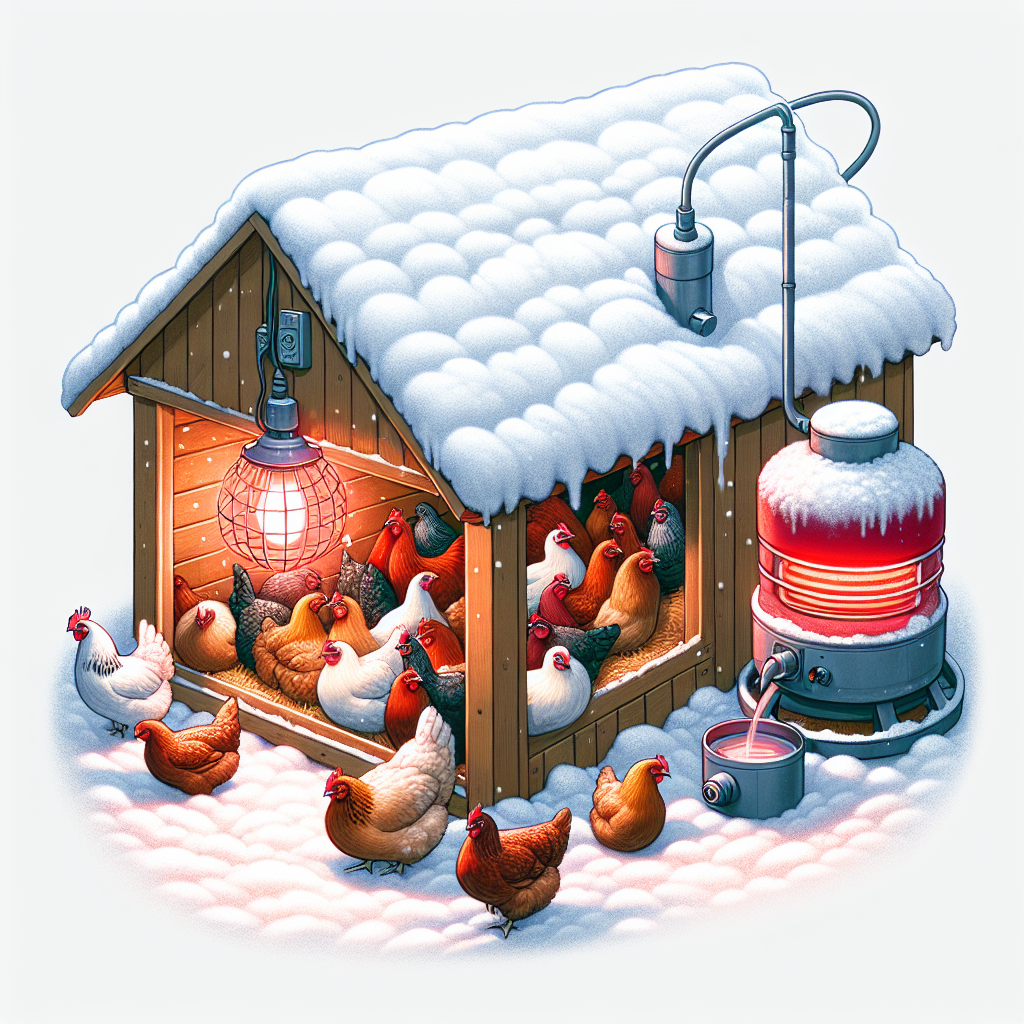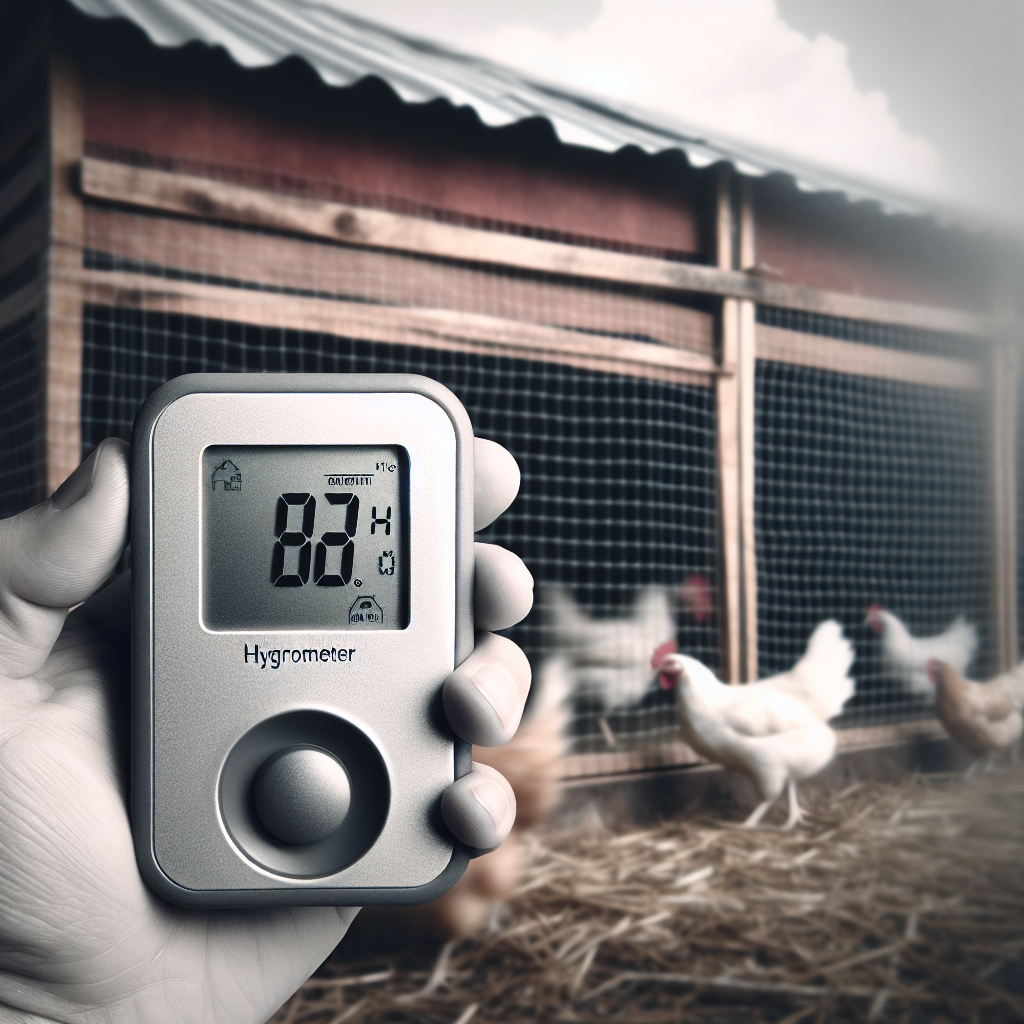As winter approaches, it’s essential to make sure your feathered friends are cozy and comfortable in their chicken coop. With dropping temperatures and inclement weather, taking a few simple steps to prepare can go a long way in ensuring the well-being of your flock. From insulating the coop to providing the right bedding and adjusting their diet, this article will guide you through the necessary preparations to keep your chickens warm and content during the winter months. So, grab a cup of hot cocoa and let’s get started on creating a winter wonderland for your feathered companions!
Insulate the Coop
To ensure that your chickens stay warm and cozy during the winter months, the first step is to insulate the coop. Start by sealing any cracks or gaps in the walls and windows using caulk or weatherstripping. These small openings can let in cold drafts, so it’s important to address them.
Next, consider using insulation materials to further protect your coop from the cold. Insulation comes in various forms such as foam panels, straw bales, or recycled denim. These materials help to trap heat and keep the interior of the coop insulated from the harsh winter temperatures.
Lastly, cover the windows with plastic sheets to provide an additional layer of insulation. This will prevent cold drafts from seeping in while still allowing some natural light to enter.
Ensure Proper Ventilation
While it may seem counterintuitive, proper ventilation is crucial for maintaining a healthy and comfortable environment inside the coop during winter. Without adequate ventilation, the buildup of moisture and ammonia from chicken waste can lead to respiratory issues and frostbite.
To ensure proper ventilation, install vents near the roof of the coop. These vents will allow fresh air to circulate while expelling stale air and excess moisture. It’s important to position the vents in a way that doesn’t create drafts directly on the chickens.
Additionally, prevent condensation buildup by keeping the coop clean and dry. Regularly remove any excess moisture or wet bedding to maintain a suitable environment for your chickens.
Lastly, avoid overcrowding the coop. When too many chickens are present in a confined space, it can lead to excessive moisture buildup and poor air quality. Make sure your chickens have enough space to move around comfortably.
Provide Adequate Heating
During the cold winter months, your chickens will appreciate some extra warmth. To provide this, you can use a heat lamp or a ceramic heater. These heating sources should be positioned high enough to prevent any potential fire hazards.
Always ensure electrical safety by using heat lamps and heaters that are specifically designed for coop use. It’s crucial to keep electrical cords away from the reach of curious chickens and to periodically check for any signs of damage.
Avoid using open flames such as kerosene heaters or candles, as they can pose serious fire hazards. Stick to safer heating options like heat lamps or ceramic heaters.
Protect Against Drafts
To keep your chickens comfortable, it’s essential to protect the coop against drafts. Start by closing any gaps in the door. A tight-fitting door will prevent cold air from entering the coop and provide insulation.
Insulating the floor is another effective way to protect against drafts. You can use materials such as straw, wood shavings, or even foam insulation boards to create a layer of warmth between the floor and the chickens.
Draping blankets or curtains around the entrance of the coop can also help trap heat and keep out cold drafts. This additional layer of insulation can make a significant difference in maintaining a cozy environment for your chickens during the winter.
Prepare the Roosting Area
The roosting area is where your chickens will spend most of their time, especially during the colder months. To ensure their comfort, it’s important to prepare this area adequately.
Start by providing extra bedding in the roosting area. A thick layer of straw or wood shavings will help insulate the area and keep your chickens warm. Consider using the deep litter method, which involves regularly adding fresh bedding on top of the existing one. As the bedding decomposes, it generates heat and provides natural insulation.
Cleaning and drying the roosts regularly is essential for your chickens’ health and comfort. Remove any soiled bedding or droppings and ensure the roosts are dry. Moisture can lead to frostbite, so it’s important to maintain a clean and dry environment for your chickens to roost.
Check Water Supply
Water is essential for your chickens’ well-being, regardless of the season. However, the winter months bring new challenges when it comes to ensuring a steady water supply.
To prevent freezing of water, consider using heated waterers or de-icers. These devices will keep the water temperature above freezing, ensuring that your chickens have access to fresh water at all times.
Monitoring water levels regularly is crucial during winter. Inspect the waterers frequently to ensure they are functioning properly and have enough water. In freezing temperatures, it’s not uncommon for waterers to become clogged or frozen, so it’s important to check on them regularly.
Stock Up on Feed
During the winter months, your chickens will need extra energy to stay warm. Increase the quantity of feed you provide them to ensure they have enough calories to generate heat.
Choosing nutrient-rich options for their feed will also contribute to their overall well-being. Look for feeds that contain ingredients like whole grains, seeds, and legumes. These provide essential nutrients and calories needed to keep your chickens healthy and maintain their body temperature.
Storing feed in a rodent-proof container is crucial during winter. As temperatures drop, rodents seek shelter and food sources, including the chicken coop. By using a secure container, you can prevent rodents from accessing and contaminating your chickens’ feed.
Enhance Lighting
As the days become shorter during winter, it’s important to enhance lighting inside the coop to maintain a regular light-dark cycle.
By installing artificial lighting, you can provide additional hours of light, which stimulates egg production in hens. Position the lighting system safely, away from combustible materials and out of the reach of curious chickens.
Maintaining a regular light-dark cycle is essential for your chickens’ circadian rhythm. Aim for a 14-16 hour light cycle per day to simulate the natural daylight hours during the warmer months. This will help regulate their sleep patterns and overall well-being.
Secure the Perimeter
Ensuring the safety of your chickens is important year-round, but during winter, it becomes even more critical due to the heightened presence of predators seeking food and shelter.
Inspect and repair any fences and chicken wire surrounding the coop. Check for any holes, loose sections, or signs of damage. Reinforce weak spots to prevent potential predators from gaining access to the coop.
Remove any potential predators from the vicinity of the coop. This includes clearing away brush, securing garbage cans, and taking measures to deter rodents or other animals that may be attracted to the coop or feed.
Install motion-activated lights around the perimeter of the coop to deter nighttime predators. These lights will startle and discourage predators from approaching, keeping your chickens safe.
Plan for Snow and Ice
Winter often brings snow and ice, which can pose additional challenges for chicken owners. To ensure the accessibility and safety of the coop, it’s important to plan accordingly.
Shovel a path to the coop after each snowfall. This will allow you to easily access the coop for feeding, watering, and general maintenance. Keep in mind that chickens aren’t fond of walking on snow, so a clear path will make it much easier for them to move around.
Use safe ice melt products for de-icing purposes. Avoid using chemicals that can be harmful to the chickens or damage the coop, such as rock salt. Look for pet-friendly ice melt products that won’t harm your chickens’ feet or be toxic if they ingest it.
Keep salt and other chemicals away from the chickens’ access. It’s important to exercise caution when using any de-icing chemicals around the coop. Ensure that these substances are stored securely out of reach of your chickens to prevent accidental ingestion.
By following these comprehensive steps to winterize your chicken coop, you can create a safe and comfortable environment for your feathered friends during the cold months. Remember, a happy and healthy flock will reward you with fresh eggs and plenty of joy throughout winter and beyond. Stay warm, stay cozy, and enjoy your well-prepared chicken coop!




